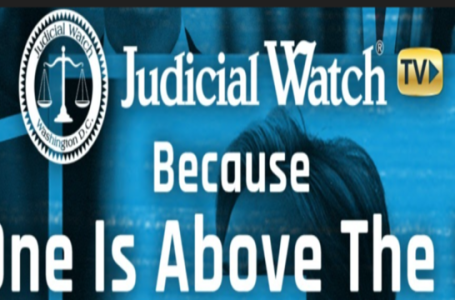THE FALL OF BLACK LIVES MATTER

Welcome to Byron York’s Daily Memo newsletter.
Sign up here to receive the newsletter.
THE FALL OF BLACK LIVES MATTER. Back in the summer of 2020, at the height of the Black Lives Matter movement, a federal agency, the U.S. Office of Special Counsel, ruled that BLM was not political or partisan, and therefore federal employees could express support for the movement while on duty — such as wearing BLM shirts — without violating federal rules against partisan activity in the workplace.
A new poll shows just how wrong that ruling was. It would be hard to imagine a more partisan movement than BLM.
For the last several years, a polling organization called Civiqs, which is affiliated with the left-wing website Daily Kos, has conducted surveys on support for Black Lives Matter. In the latest poll, released last week, Civiqs found that 44% of those surveyed support BLM, while 43% oppose, and 11% say they neither support nor oppose. So it is fair to say the country is evenly divided on BLM.
Subscribe today to the Washington Examiner magazine that will keep you up to date with what’s going on in Washington. SUBSCRIBE NOW: Just $1.00 an issue!
|
|
||||
But a look at who supports BLM shows a starkly political divide. The survey found that 85% of Democrats support BLM, while just 4% oppose. On the other side, 87% of Republicans oppose BLM, versus just 3% who support it. The political parties are almost mirror images of each other, divided nearly perfectly along partisan lines.
But what about independents? The pollsters found that independent support for BLM has fallen steadily since its peak immediately after George Floyd’s death in May 2020. Sometime in the summer of this year, independent support fell below opposition. In the new poll, 47% say they oppose BLM, while 37% say they support it, and 15% say neither.
BLM has always been a partisan movement. Even in 2020, just after Floyd’s death, Republican support never rose above 9%, while Democratic opposition never rose above 3%. At that moment, in 2020, independent support hit a peak of 51%, now down to 37%.
|
|
||||
What does it mean? Black Lives Matter remains a potent force in Democratic politics. Anything that has 85% support within a political party is going to be an influence. And it will continue to be a nonentity in Republican politics; anything with just 3% support in a political party will simply not matter.
The worry for Democrats is BLM’s falling support among independents. At that peak moment in 2020, with independents on board, nationwide support for BLM hit a high of 52%. Organizers could legitimately say a majority supported the movement. Now, with the steady decline of support among independents, that is no longer true.
BLM creates other divisions. For example, there is a gender gap in BLM support. The poll found that a majority of all men, 51%, oppose BLM, versus 36% who support it. The numbers were precisely the opposite among women: 51% support, versus 36% opposition. There is also an age gap — younger people support BLM more than older. And there is the race gap: 82% of black Americans support BLM, versus 7% who oppose, while 53% of white Americans oppose BLM, versus 35% who support.
But no divide is deeper than the partisan divide. At this point in its history, BLM is a partisan political movement, no matter what the federal government said back in 2020.
For a deeper dive into many of the topics covered in the Daily Memo, please listen to my podcast, The Byron York Show — available on the Ricochet Audio Network and everywhere else podcasts can be found. You can use this link to subscribe.
















